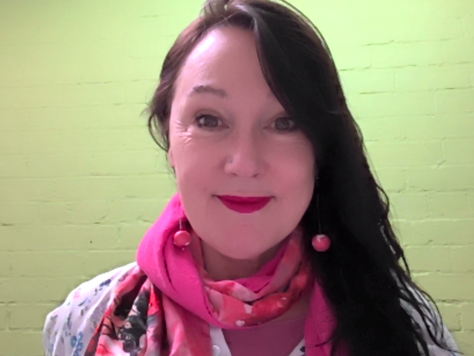
Following the evidence
There are very few exceptions to the statement ‘everyone can learn to read and write’. Learning to read is one of the most studied human skills. We certainly now know enough about it to build a nation, which in practical terms is fully literate. This research has yielded high-quality evidence about how to bring literacy to any child or adult.
By Rosalie Martin
I never speak to anyone on this topic who doesn’t want to see Tasmania move from its shameful 48% functional illiteracy to something more like 0.48%. Practitioners and policymakers alike want this. (And by the way, a bunch of enthusiastic Tasmanians coming together as the Tasmanian #100PercentLiteracy Alliance, have authored a ‘roadmap’ to this end. It’s worth a look.)
But following evidence makes asks of us. And asks present challenges which touch the personal.
A friend recently enquired of me, “Have you ever had to change your whole practice and way of recommending in order to follow evidence?”
An excellent reflection-evoking question.
I have. And have been in the throes of it recently.
Much speech pathology work is spent helping children with developmental language disorder learn to use language at the top of their potential. This group don’t develop language typically. They cannot understand and use spoken language at the level of their peers. But with the right interventions, language gains are possible for these children at all stages of schooling – and the gains are often enormous.
British research from 2016 (Norbury et al., 2016) concluded that up to 10% of children have developmental language disorder – and that in 7% of the population the condition is not associated with intellectual disability or other medical diagnoses. That’s a couple of children per classroom heading into school each year with a ‘hidden disability’ that will hinder their academic progress and outcomes.
When this information is put together with data that 50% of children in contact with youth justice have severe language impairment (Caire, 2013), we see that language disorder is a disability that also has implications for community safety and wellbeing. If people can’t speak out, they’ll act out.
Helping people to speak out matters; for human rights, personal freedoms and democracy.
Thus interventions that build language occupy my mind, and the minds of my colleagues, a lot.
At a 2018 conference, keynote speakers Ron and Sandi Gillam presented exciting research that will more powerfully equip those of us who teach spoken language to language-impaired children, to get better results and faster. Bring it on.
One part of the Gillams’ research showed that a method I’ve been using since its efficacy was demonstrated in the ’90s, is not as successful for lasting change as the strategies their work has uncovered.
Now, I could rail against this and be defensive. After all, I’ve seen children’s language really progress using my preferred method. It’s been very satisfying.
But I am ethically obliged to examine the quality of the new evidence, interrogate its underpinning theory, update my knowledge and change my practice and that of the team I work with, when required.
Again I say, bring it on. If we are rigorous with this, we can expect children to make even more excellent gains.
There’s no shame in old methods giving way to new, high-quality information. That’s science. That’s progress. It’s to be welcomed. It’s how things improve.
The old language intervention method worked for many children, but for some . . . it didn’t cut it.
It will be costly to buy additional resources and to train and support our teams. But how could we entertain doing otherwise? It’s better for the children, and much more satisfying for us as therapists, if we master the skills we need to most successfully help language-impaired children tear down the obstacles to their independent learning.
The greatest barriers to meeting the asks of following high-quality evidence are frequently about personal courage within us, the practitioners, rather than the work itself. This is worth reflecting on.
So it is with the nation’s literacy problem.
The old methods have worked for some children and haven’t cut it for many others. This has pulled heavily on the public purse and devastated many lives: as a group, people with lower literacy have greater challenges with educational engagement, health, employment and pro-social choices.
But high-quality evidence from studies across the world point at reading and writing as tasks overwhelmingly mediated by the phonemic (speech sound) processing areas of our brains. It has been shown that this continues to be so, even in accomplished readers and writers. The brain integrates print-based information with spoken language through neurological processing that is phonemically based.
Best-practice teaching from this knowledge will allow all children, including those with developmental language disorder, dyslexia and other complex learning profiles, to progress in the fastest, surest way. It is the right thing to do; and when done, is inherently satisfying. It will require new learning for practitioners, and will raise the cost of training and supporting them. But it’s costlier not to. Not doing so has the logic of a compound-interest loan.
Let’s answer ‘yes’ to the asks of literacy evidence.
This article appeared in the Dec 2021 edition of Nomanis.
This article was originally published in the Mercury newspaper and then on the Speech Pathology Tasmania blog.
Rosalie Martin is a clinical speech pathologist with more than 35 years’ experience, around 20 of them at the helm of her Hobart-based practice, Speech Pathology Tasmania. She is a criminologist and accredited facilitator with the Centre for Courage & Renewal. Kindness in action, in communication, and in evidence-based service delivery, are critical drivers of her work. In 2013, Rosalie founded a charity, Connect42, to bring literacy and parent-child attachment programs to prison inmates. For this work, she was awarded 2017 Tasmanian Australian of the Year. See Rosalie’s website https://rosaliemartin.com/ for more information.